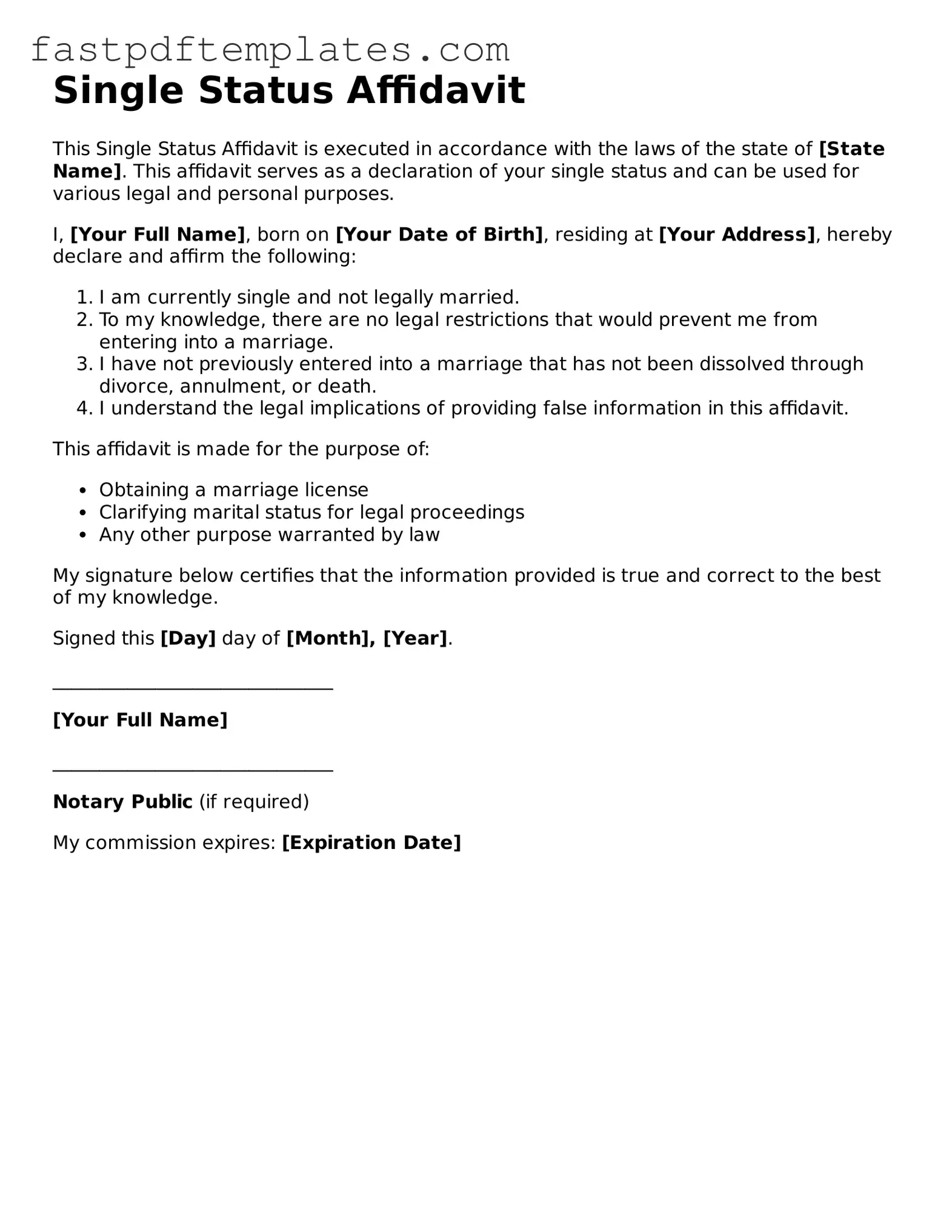Single Status Affidavit
This Single Status Affidavit is executed in accordance with the laws of the state of [State Name]. This affidavit serves as a declaration of your single status and can be used for various legal and personal purposes.
I, [Your Full Name], born on [Your Date of Birth], residing at [Your Address], hereby declare and affirm the following:
- I am currently single and not legally married.
- To my knowledge, there are no legal restrictions that would prevent me from entering into a marriage.
- I have not previously entered into a marriage that has not been dissolved through divorce, annulment, or death.
- I understand the legal implications of providing false information in this affidavit.
This affidavit is made for the purpose of:
- Obtaining a marriage license
- Clarifying marital status for legal proceedings
- Any other purpose warranted by law
My signature below certifies that the information provided is true and correct to the best of my knowledge.
Signed this [Day] day of [Month], [Year].
______________________________
[Your Full Name]
______________________________
Notary Public (if required)
My commission expires: [Expiration Date]
